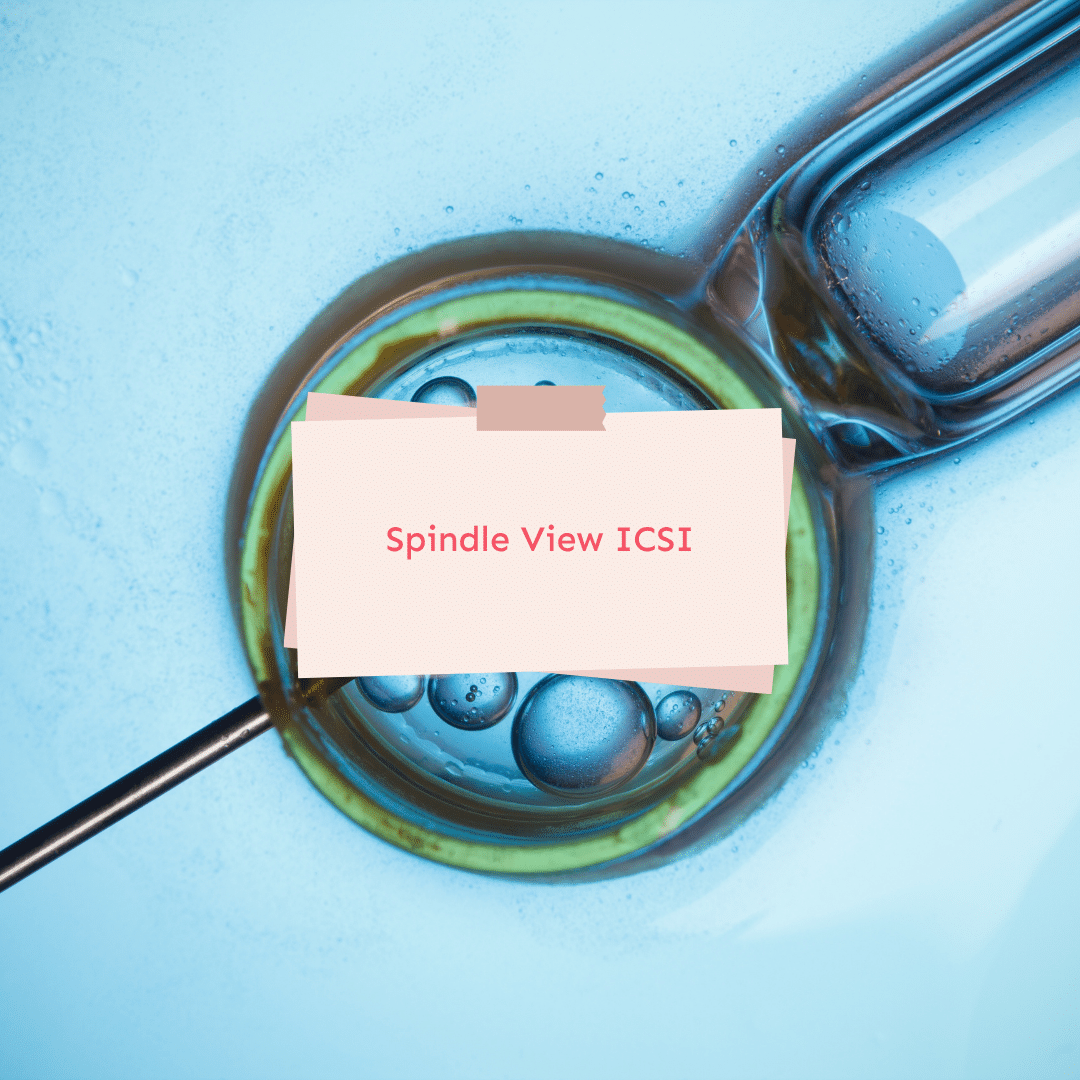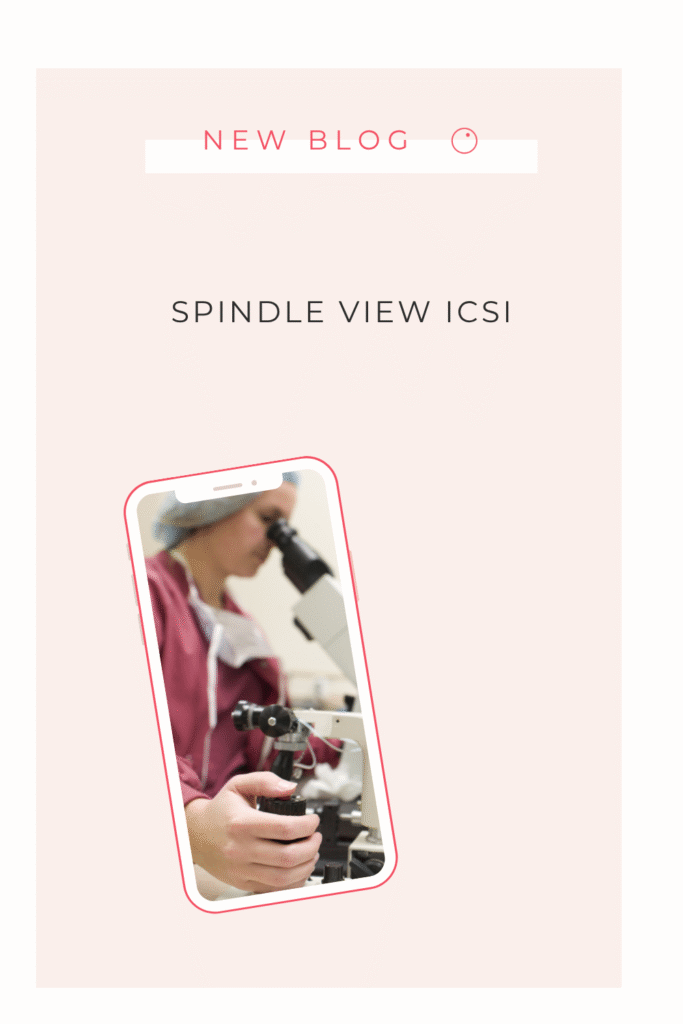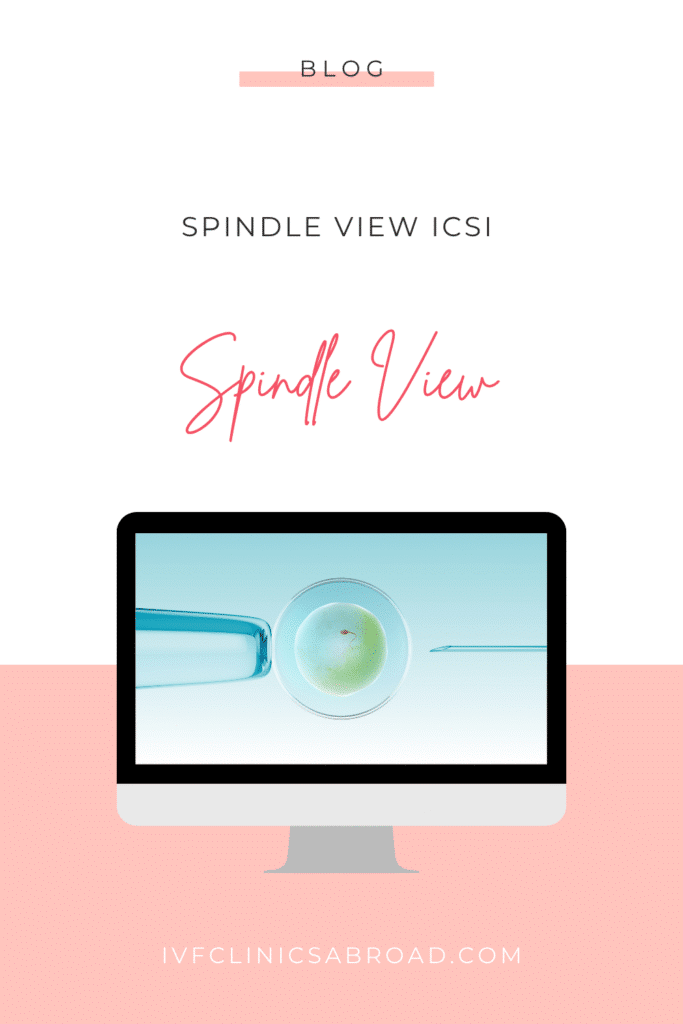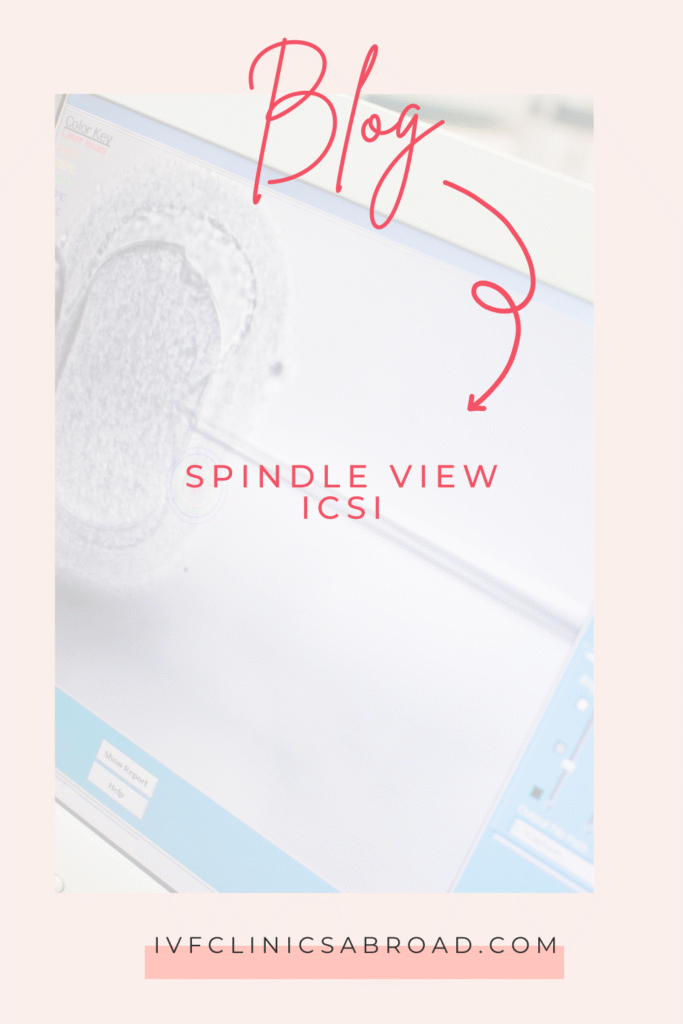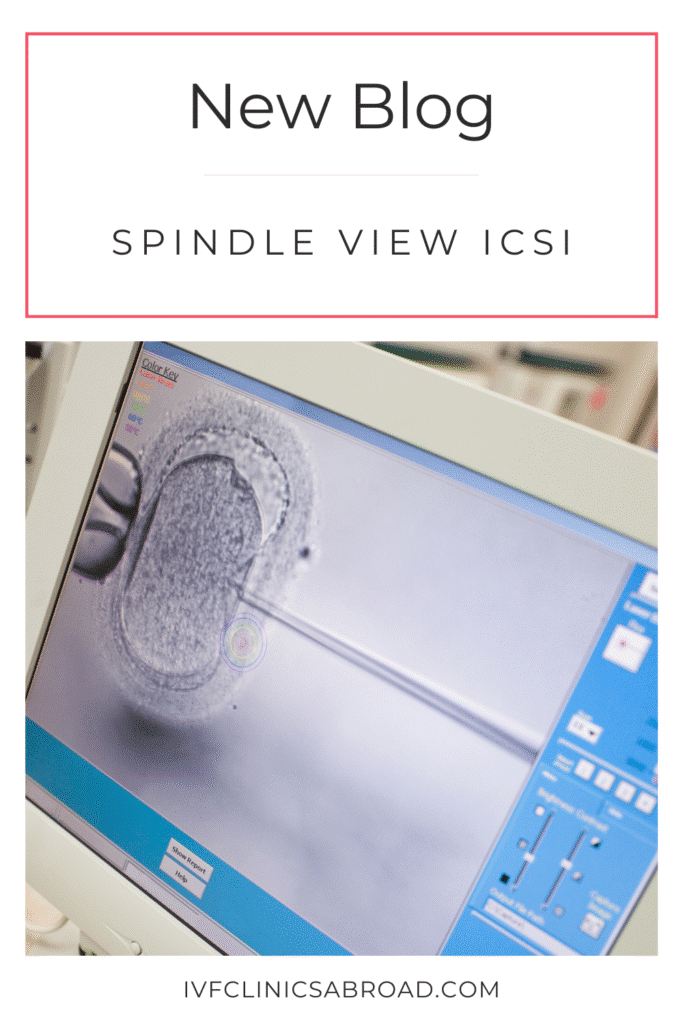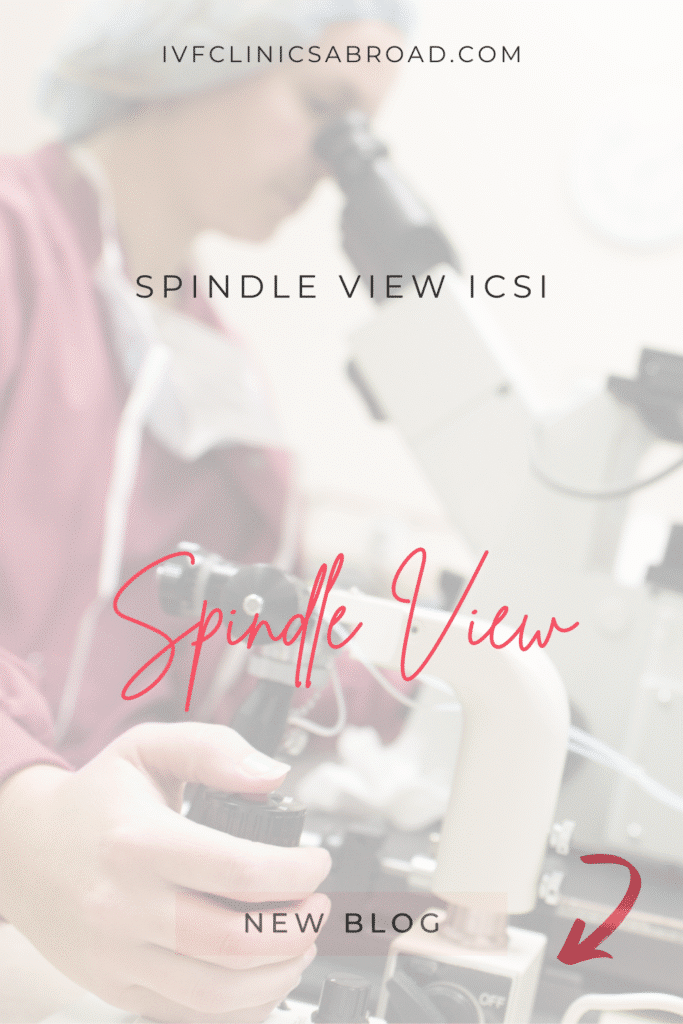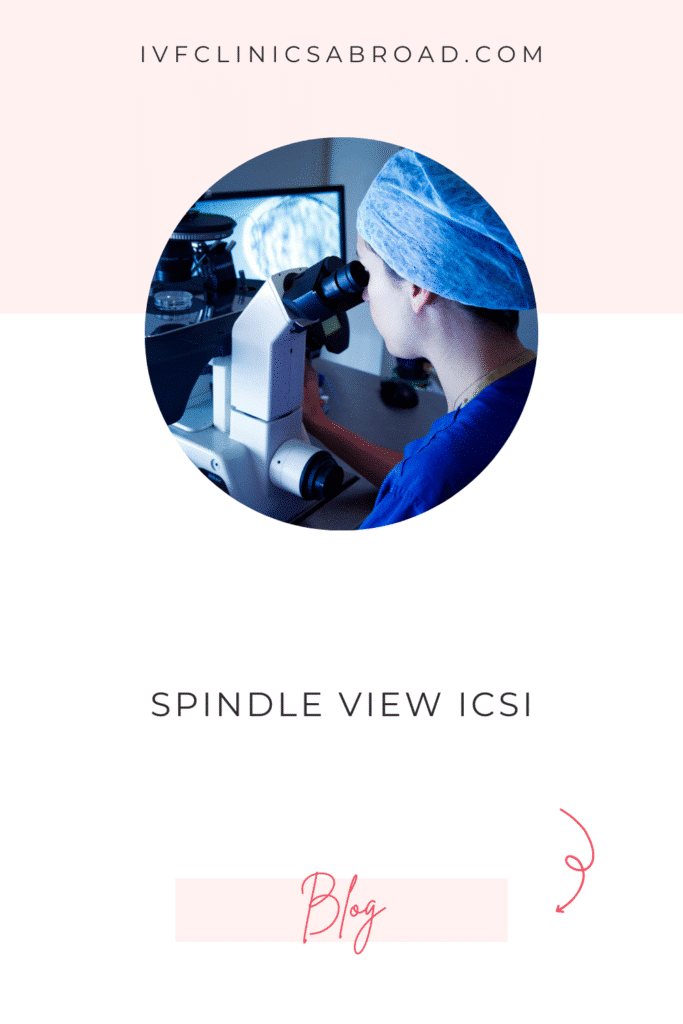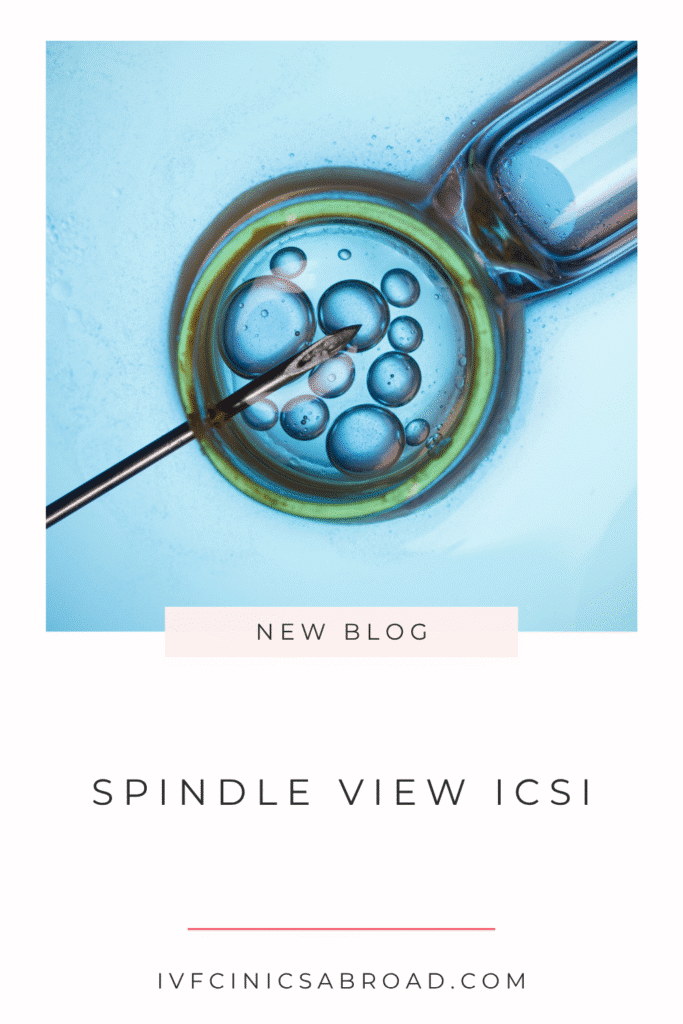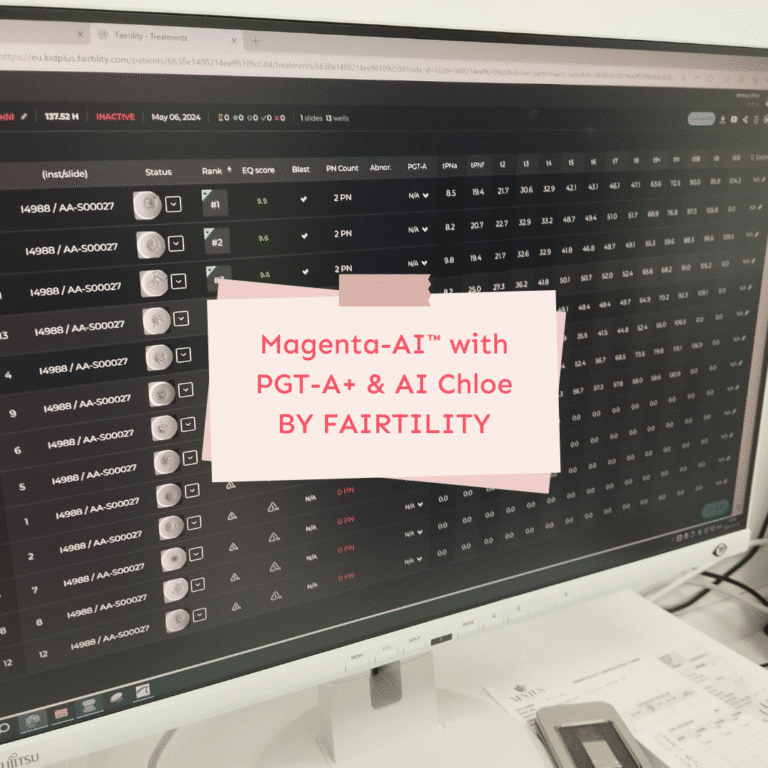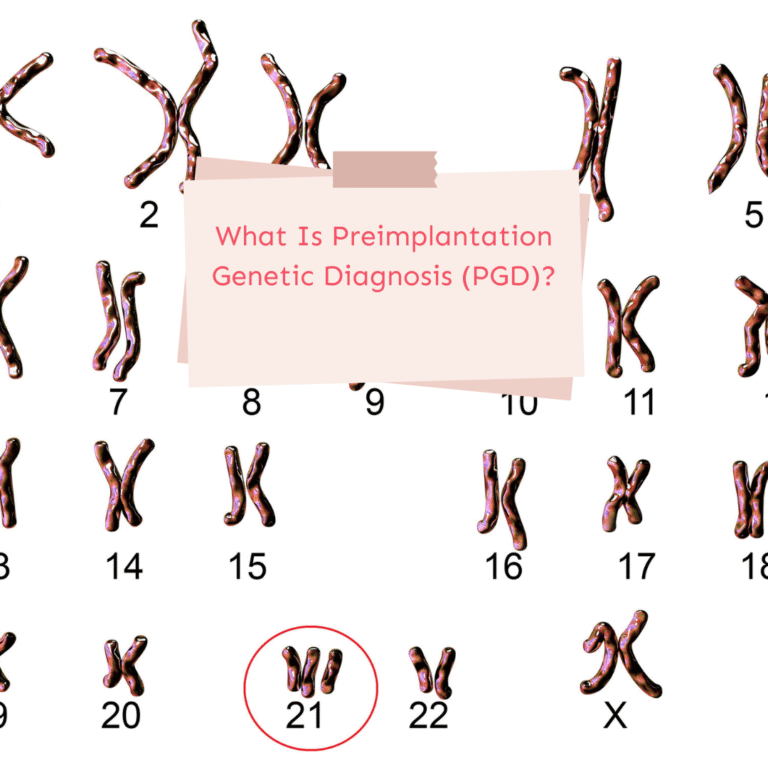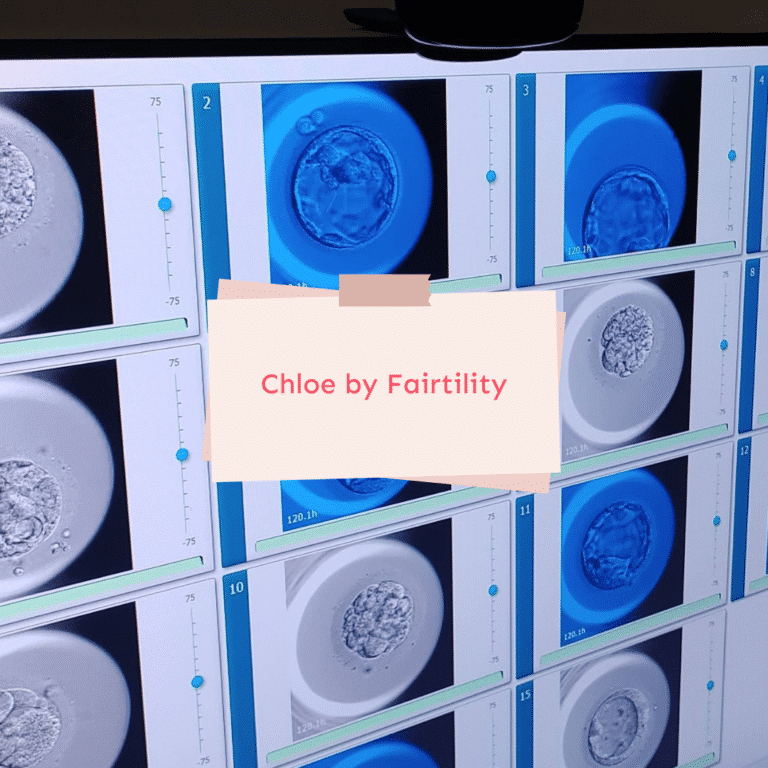Spindle View ICSI: Improving IVF, embryo development and implantation
Starting IVF can feel like stepping into a world of both hope and complexity. You are trusting your medical team, their expertise in intracytoplasmic sperm injection (ICSI), and the latest fertility solutions to help you reach your dream of having a child. One of the most promising tools available today is Spindle View ICSI – a novel technology that allows doctors to observe the meiotic spindle inside the oocyte with remarkable clarity.
The spindle is a delicate structure that plays a critical role during fertilization, guiding the correct alignment of chromosomes so that embryo development can begin. When the spindle can be observed clearly, your embryologist can assess oocyte quality more accurately before sperm injection takes place. This careful spindle observation reduces the risk of damage during sperm injection and can improve the implantation rate, particularly for patients with poor results in previous IVF cycles.
By using polarized light microscopy and the PolScope to visualize the actual meiotic spindle and its position in relation to the zona pellucida, doctors can make more precise decisions during the ICSI procedure. This approach doesn’t replace conventional ICSI – instead, it enhances it, helping to avoid damage to the spindle and improving the chances of successful fertilization and pregnancy. For you, this means that every step, from oocyte maturity to embryo transfer, is guided by advanced technology designed to give you the best possible outcome.
Understanding spindle view technology in IVF
In IVF procedures, every detail matters – especially when it comes to the health and structure of the oocyte spindle. The spindle apparatus is a network of microtubules that controls chromosomal movement during cell division, and its proper alignment is essential for fertilization and embryo development. Spindle view technology uses a PolScope to perform spindle visualization without causing damage to the spindle itself. By providing a clear marker for spindle location, it enables embryologists to work with greater precision during the ICSI procedure, reducing risks and improving the chances of a successful pregnancy. This approach has been shown to be particularly valuable for patients with poor oocyte quality or a reduced ovarian reserve, where every mature egg counts.
What spindle view shows during ICSI
During the ICSI procedure, the spindle can be observed in real time, allowing embryologists to determine its exact position in relation to the zona pellucida. This position of the spindle acts as a guide to avoid damage during sperm injection and to maintain the integrity of the spindle structure. Spindle localization and spindle observation help in deciding the optimal angle for injecting the sperm, which in turn supports better embryo quality and successful fertilization. With conventional ICSI, the spindle may not be visible, but spindle view ICSI offers the advantage of seeing and preserving this delicate structure.
How the meiotic spindle impacts oocyte quality
The meiotic spindle controls chromosomal segregation during oocyte maturation, and any displacement or damage can lead to poor embryo quality or failed implantation. Through meiotic spindle visualization – sometimes called visualization of meiotic spindle – doctors can assess whether the spindle is properly aligned before proceeding. This detailed analysis of the spindle allows for more informed decisions, helping to identify mature oocytes that are most likely to fertilize successfully. Understanding spindle location and its role in oocyte maturity and quality is a crucial step in improving fertilization rates and overall IVF success.
The role of spindle view ICSI in fertility treatment
In modern fertility treatments, the goal is not only to achieve fertilization but also to ensure that the embryo transfer leads to a healthy implantation and pregnancy. Spindle view ICSI plays a key role in this process by allowing embryologists to directly assess the health of the oocyte spindle before fertilization. This detailed insight supports the selection of eggs that are more likely to result in a better embryo, improved implantation and pregnancy rates, and a higher fertilization rate compared to conventional ICSI. By understanding how the spindle controls chromosomal alignment, clinicians can make decisions that reduce the risk of poor embryo quality and increase the success rate of IVF procedures.
Assessing oocyte spindle health before fertilization
Evaluating oocyte quality before fertilization is one of the most critical steps in achieving successful fertilization and embryo development. Spindle view ICSI offers the ability to identify subtle defects or misalignments in the spindle and zona pellucida that might not be visible with traditional observation methods. The position of the spindle relative to the polar body acts as a natural guide, and the polar body as a marker can help determine the optimal point for sperm injection. This approach reduces the risk of damage, increases the likelihood of successful fertilization, and supports the development of embryos with higher implantation potential.
Using polarized light to observe the spindle
Polarized light microscopy allows embryologists to visualize the actual meiotic spindle without the need for staining or other invasive methods. Using a PolScope to visualize the spindle provides a clear image of the spindle and its relationship to surrounding structures such as the zona pellucida. This visualization makes it easier to avoid damage during sperm injection and to preserve spindle integrity, both of which are essential for maintaining oocyte quality and ensuring better embryo outcomes. By using polarized light to observe the spindle, the IVF clinic can apply advanced technology to optimise each step from fertilization to embryo transfer, improving overall chances of successful implantation and pregnancy.
“Seeing the spindle clearly means giving every oocyte its best chance – and every patient new hope.”
Nathalie Wiederkehr
Polarized light microscopy in IVF
Polarized light microscopy is a novel technology that has brought advanced technology into routine IVF procedures. It enables the visualization of the spindle in living oocytes without the need for dyes or invasive techniques, making it safer and more accurate than older approaches. In spindle view ICSI, this method allows embryologists to identify a visible spindle and assess its position before sperm injection. By using polarized light microscopy, the embryologist can see details that conventional ICSI relies on indirect markers to detect, such as the polar body, which can sometimes be misleading. This added precision can improve the fertilization rate and, ultimately, the overall success rate in IVF.
Advantages compared to conventional observation
Conventional observation methods for assessing oocytes before fertilization often depend on visual cues that may not reveal spindle structure or location. For example, conventional ICSI relies on the polar body as an approximate marker, but this does not always align with the actual spindle location. In contrast, polarized light microscopy allows for the visualization of the spindle in real time, reducing the risk of damaging the spindle during sperm injection. This approach provides more accurate information, enabling embryologists to avoid damage and improve embryo quality, especially in patients with poor ovarian reserve or poor quality eggs.
How it improves the success rate in IVF
When the spindle is clearly visible, embryologists can make better decisions during the ICSI procedure, such as adjusting the injection angle to avoid the spindle and preserve its function. This careful handling supports higher rates of successful fertilization and embryo development. View ICSI uses a PolScope to visualize the spindle, which enhances the ability to assess oocyte maturity and quality before proceeding. By maintaining spindle integrity, clinics can achieve a higher rate in IVF, which directly contributes to improved implantation and pregnancy rates. This precision is one of the reasons polarized light microscopy has become a valuable tool for IVF clinics worldwide.
From fertilization to embryo development
In IVF, the journey from fertilization to embryo development is a delicate process where spindle health plays a decisive role. The spindle controls chromosomal alignment during oocyte maturation, ensuring that once the sperm is injected, the egg can proceed through fertilization and embryo development without errors. Damage to the spindle at this stage can lead to poor embryo quality or failed embryonic development, reducing the overall chances of successful implantation and pregnancy. Protecting spindle integrity during the ICSI procedure helps maintain oocyte maturity and quality, which is crucial for achieving a healthy embryo ready for transfer.
The link between spindle health and embryo quality
A healthy spindle is directly linked to embryo quality. During ICSI, injecting the sperm without disrupting the spindle structure preserves its ability to guide proper chromosome segregation. This careful approach lowers the risk of poor embryo quality and supports stable embryonic development. Oocyte maturity at the time of fertilization is also critical — a mature oocyte with an intact spindle has a higher likelihood of successful fertilization and embryo development, which ultimately increases the implantation rate.
Reducing risks and improving implantation rates
Every step in the IVF process aims to maximise the chances of successful implantation and pregnancy. By observing the spindle before fertilization, embryologists can adjust the injection technique to avoid damage, leading to better embryo outcomes. When the spindle is intact and functioning, the resulting embryos have a stronger potential for implantation, improving the overall success of IVF cycles. This targeted care ensures that each fertilized egg has the best possible foundation for growth and a successful pregnancy.
Future applications of spindle view in IVF
Spindle view technology has already transformed how intracytoplasmic sperm injection outcomes are achieved, but its potential for the future is even greater. As advancements in polarized light technology continue, embryologists will gain more precise imaging capabilities, such as meiotic spindle imaging, to investigate the relationship between oocyte structure and fertilization success. This will not only help refine current IVF procedures but also expand fertility solutions for a wider range of patients, including those who have had poor results in previous IVF cycles. By studying the spindle of oocytes in more detail, clinics can better understand how the meiotic spindle controls chromosome alignment and how subtle changes in spindle structure may influence embryo development.
Advancements in polarized light technology
Future developments in polarized light technology and PolScope imaging may make it possible to visualise spindle details with even higher resolution. This would allow embryologists to detect issues in the spindle earlier, reducing the risk of selecting oocytes with hidden chromosomal problems. Such improvements could be applied across multiple IVF cycles, helping clinicians to identify the best possible eggs and improve the overall success of fertility treatments. As this advanced technology becomes more accessible, it may also open doors for research into other areas of reproductive medicine.
Potential benefits for patients with poor IVF outcomes
For patients with poor IVF outcomes, spindle view technology could be life-changing. By enabling embryologists to precisely identify mature, healthy oocytes, the technology may significantly improve fertilization and implantation results. In the future, combining spindle view ICSI with AI-driven analysis could create highly personalised treatment plans that optimise every step from oocyte selection to embryo transfer. This approach would give more patients — even those who have struggled through multiple IVF cycles — a greater chance of achieving a healthy pregnancy and realising their dream of parenthood.
Your next step in choosing the right clinic
If you are considering IVF or ICSI treatment abroad, the first step is to gather reliable, clear information. It is important to know where IVF, egg donation, embryo donation and genetic testing – including gender selection – are legally available, and what each destination offers in terms of treatment options and success rates.
Our guide to IVF destinations in Europe provides an overview of the best countries for fertility treatments, along with average prices and success rates for Northern Cyprus as a whole. This way, you can compare options and make an informed choice without relying on unclear or incomplete information.
Order your guide today and take the first step towards creating the family you dream of. If you would like tailored advice based on your personal situation, you can also book a private consultation with me – together we will look at your priorities, discuss trustworthy clinics, and create a plan that feels right for you.
